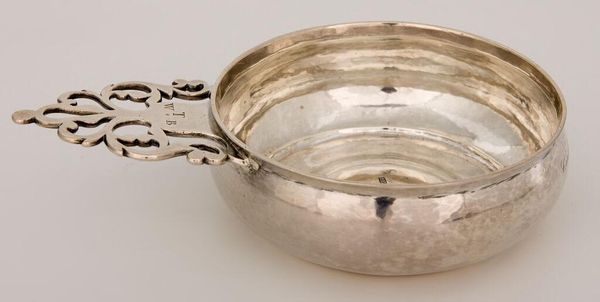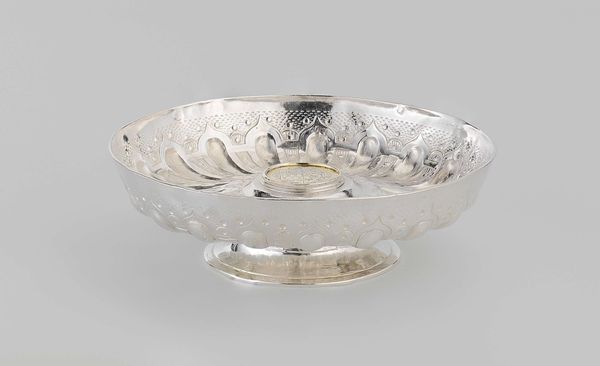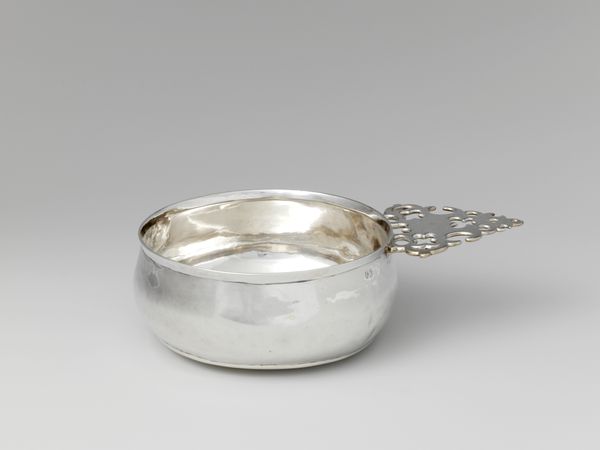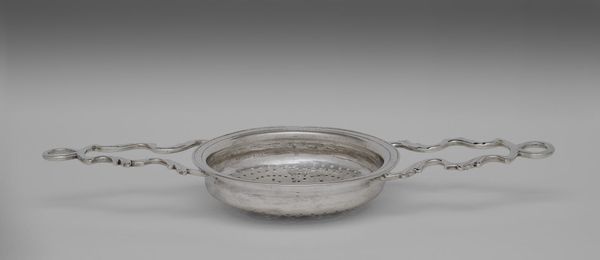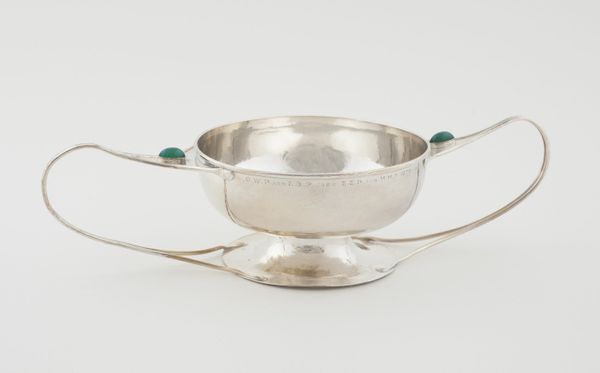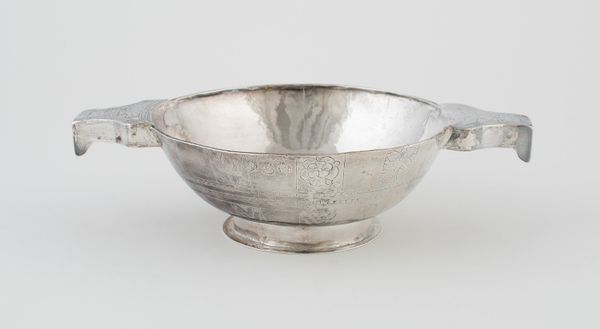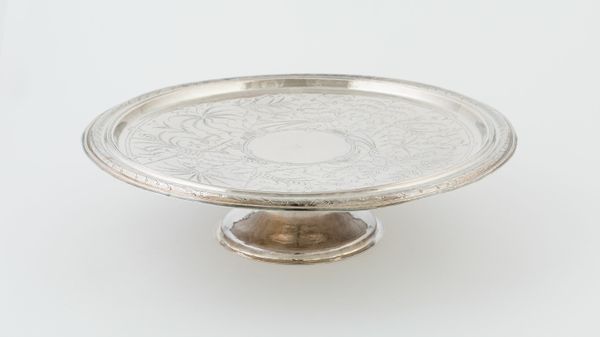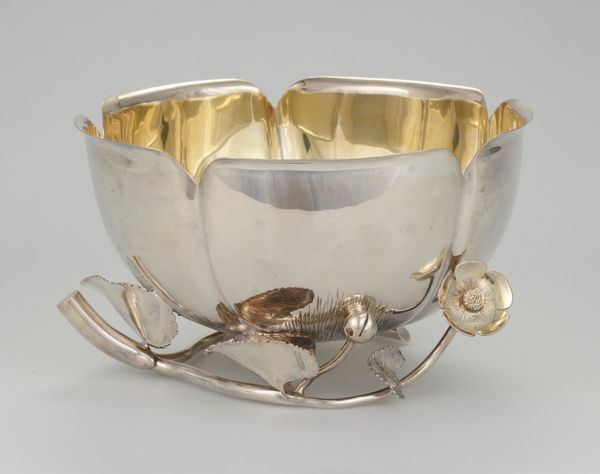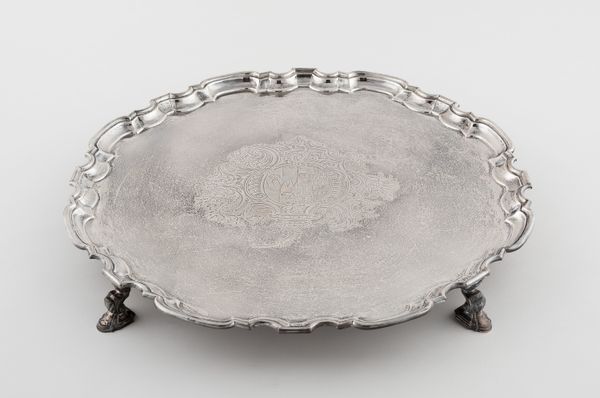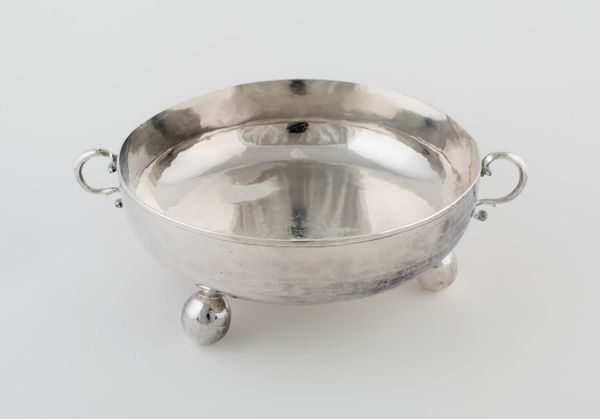
silver, metal
#
silver
#
metal
#
decorative-art
Dimensions: 2 1/8 x 7 1/4 x 5 3/8 in. (5.4 x 18.42 x 13.65 cm)
Copyright: Public Domain
This silver porringer was made in Philadelphia between 1764 and 1797, by Otto Paul de Parisien, or Otto Parisien & Son. A porringer like this one was a small, shallow bowl with a handle, used for feeding children. The cultural context for this porringer is the late 18th century, when Philadelphia was a major center of silversmithing. Craftsmen such as Otto Paul were serving a wealthy, mostly white, clientele in a city that was also a center for the revolutionary movement. A silversmith had to build a reputation for quality, making a piece such as this also a signifier of social status. The elegant curves, polished surface, and engraved monogram all speak to a prosperous and upwardly mobile class. Art history teaches us to look closely at the conditions in which art is produced. Researching Otto Paul’s career, examining the social and economic history of Philadelphia, and comparing this porringer to others would deepen our appreciation of its place in society.
Comments
No comments
Be the first to comment and join the conversation on the ultimate creative platform.
